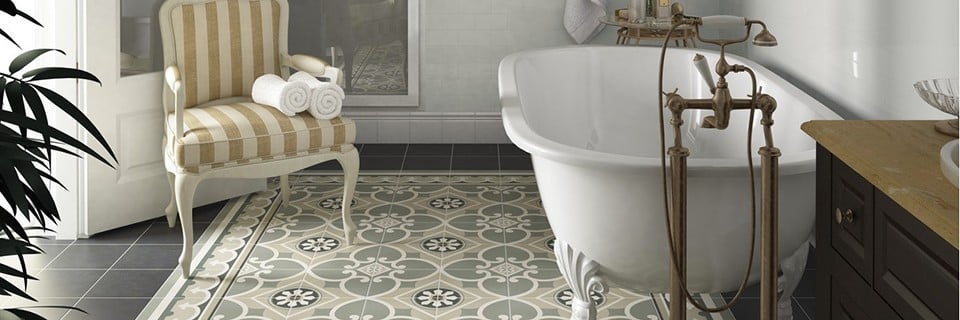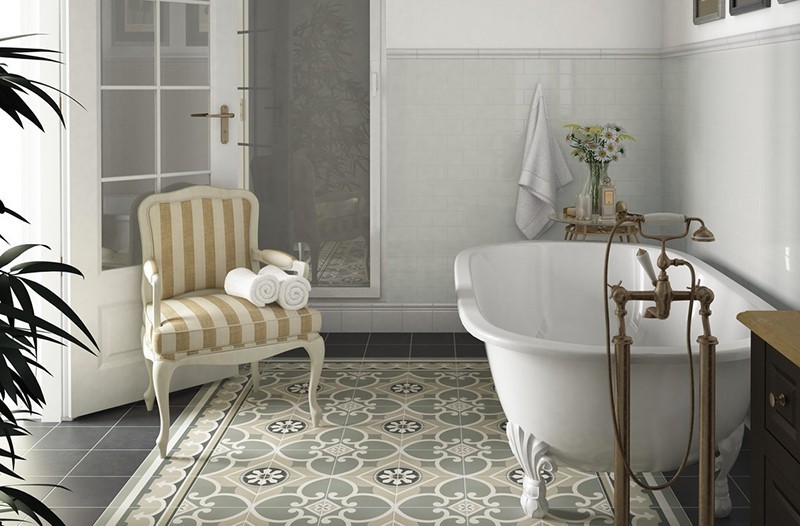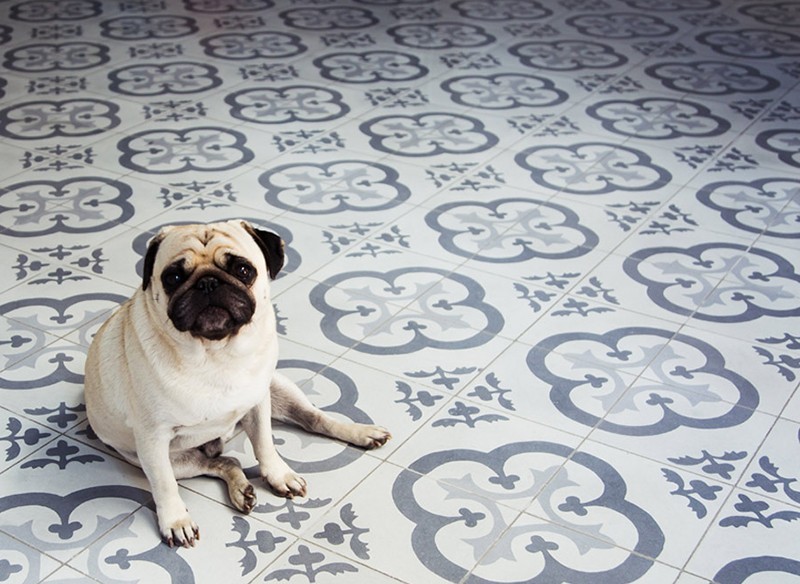Encaustic tiles are enjoying a real resurgence at the moment. Having been covered over, in recent decades, original encaustics are now being lovingly restored. New designs are also available, many staying true to the traditional earthy colour-scheme, with the occasional splash of blue or green.
Rather than having a patterned surface glaze, an encaustic’s pattern is inlaid in different coloured clays, so it never fades. This fabulous composition is part of its appeal but encaustics can be very sensitive, as they’re generally unglazed and are very porous in nature. Maintenance isn’t hard but suitable products will need to be used, to protect the surface.
In the case of new installations, encaustic tiles should be pre-sealed before grouting, to protect against ingress, and also from grease that can imprint from the hands during fixing. Fila recommends FILAFOB, which is developed to enter the porosity of the material and provide protection, without altering appearance or forming a surface film.
Before applying FILAFOB, tiles should be thoroughly cleaned and the surface must be dry. (A patch test is always recommended!)
Apply undiluted with a large, flat paintbrush and wait for 24 hours before fixing.
After fixing, any grout and polymer residues should be removed with a suitable alkaline detergent – like FILAPS87 – before applying a further coat of impregnator to prevent oil and stain damage. Wax can also be applied to enhance appearance – and to provide a further layer of protection against spillages. After installation, a neutral cleaning solution should then always be used, to ensure maximum performance from the impregnator.
Restoration of original encaustics
A similar regime should be adopted for restoration of original encaustics and all cleaning products should be carefully chosen, in conjunction with any applicable conservation policies. The surface will need to be thoroughly cleaned with an alkaline solution before application of any protectors. Often, tiles may need to be lifted and regrouted and the surface will, once again, need presealing for protection. Any fixing residues will then need to be removed as mentioned above, before an impregnator is applied.
For more advice, just contact our UK Help Line on tel. 01584 877286 or visit www.filasolutions.com


